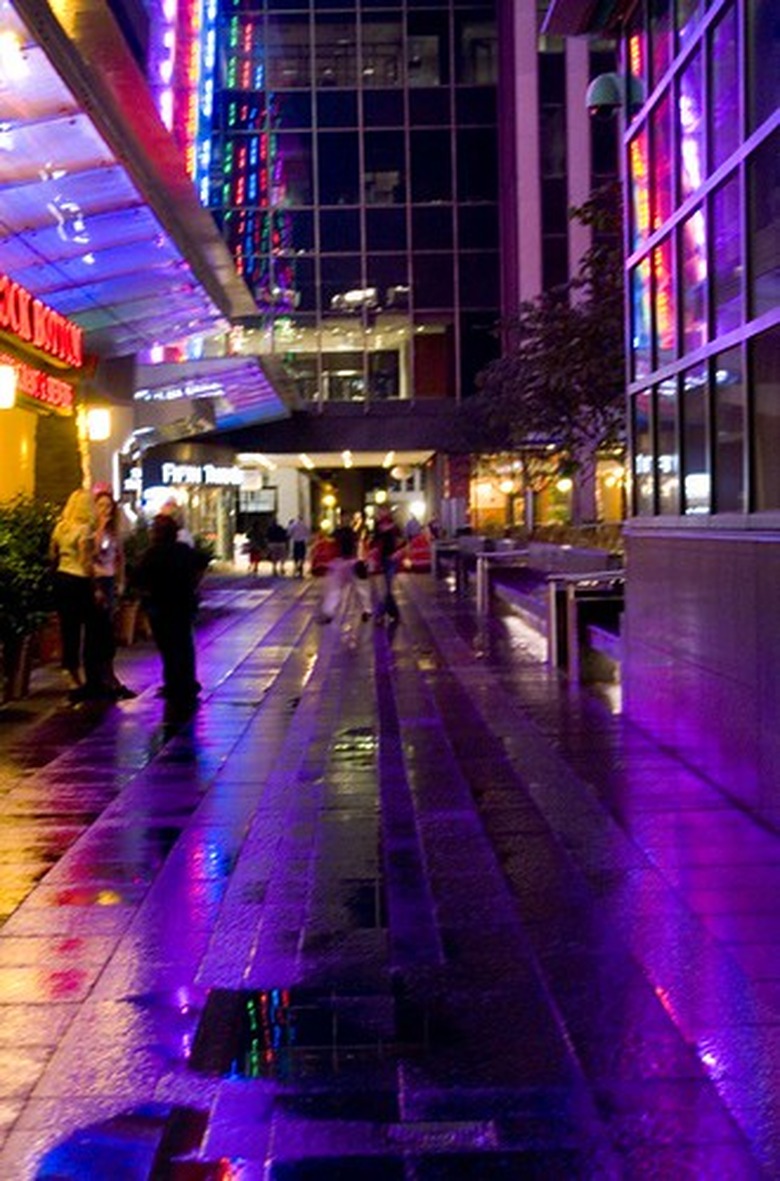What Is The Gas Used In Neon Signs That Produces A Purple Color?
Neon signs are popular for advertising because of their eye-catching colors. Neon was the first inert gas used in signs, so all lighting of this kind is still referred to as neon lighting even though there are a number of other inert gases now used. Different inert gases create different colors, including purple.
Argon
Argon
Argon is a gas used in neon signs to produce various shades of purple or lavender. Argon can also be mixed with other elements to create a variety of other colors.
Inert Gases
Inert Gases
Argon, like neon, is one of the inert, or noble, gases. They are called inert because they do not typically bond with other atoms, and maintain their molecular structures. Forced reactions cause argon and other inert gases to glow.
Properties
Properties
The chemical symbol for argon is Ar and its atomic number is 18. Discovered in 1894, argon makes up about 1 percent of the atmosphere. The name argon is derived from the Greek word "argos," meaning inactive.
Neon Lights
Neon Lights
Inert gases such as argon create the familiar neon glow when they are forced to react. These reactions occur when voltage is added to the gas in a sealed tube. This sealed tube becomes the neon light.
Other Colors
Other Colors
When used in neon signs, other inert gases create different colors. Neon glows red, mercury glows blue, and krypton glows green. Gold light comes from helium, and xenon creates a gray or bluish-gray color when used in neon signs.
Cite This Article
MLA
Deiterich, Ann. "What Is The Gas Used In Neon Signs That Produces A Purple Color?" sciencing.com, https://www.sciencing.com/facts-5871367-gas-signs-produces-purple-color-/. 9 January 2018.
APA
Deiterich, Ann. (2018, January 9). What Is The Gas Used In Neon Signs That Produces A Purple Color?. sciencing.com. Retrieved from https://www.sciencing.com/facts-5871367-gas-signs-produces-purple-color-/
Chicago
Deiterich, Ann. What Is The Gas Used In Neon Signs That Produces A Purple Color? last modified March 24, 2022. https://www.sciencing.com/facts-5871367-gas-signs-produces-purple-color-/
